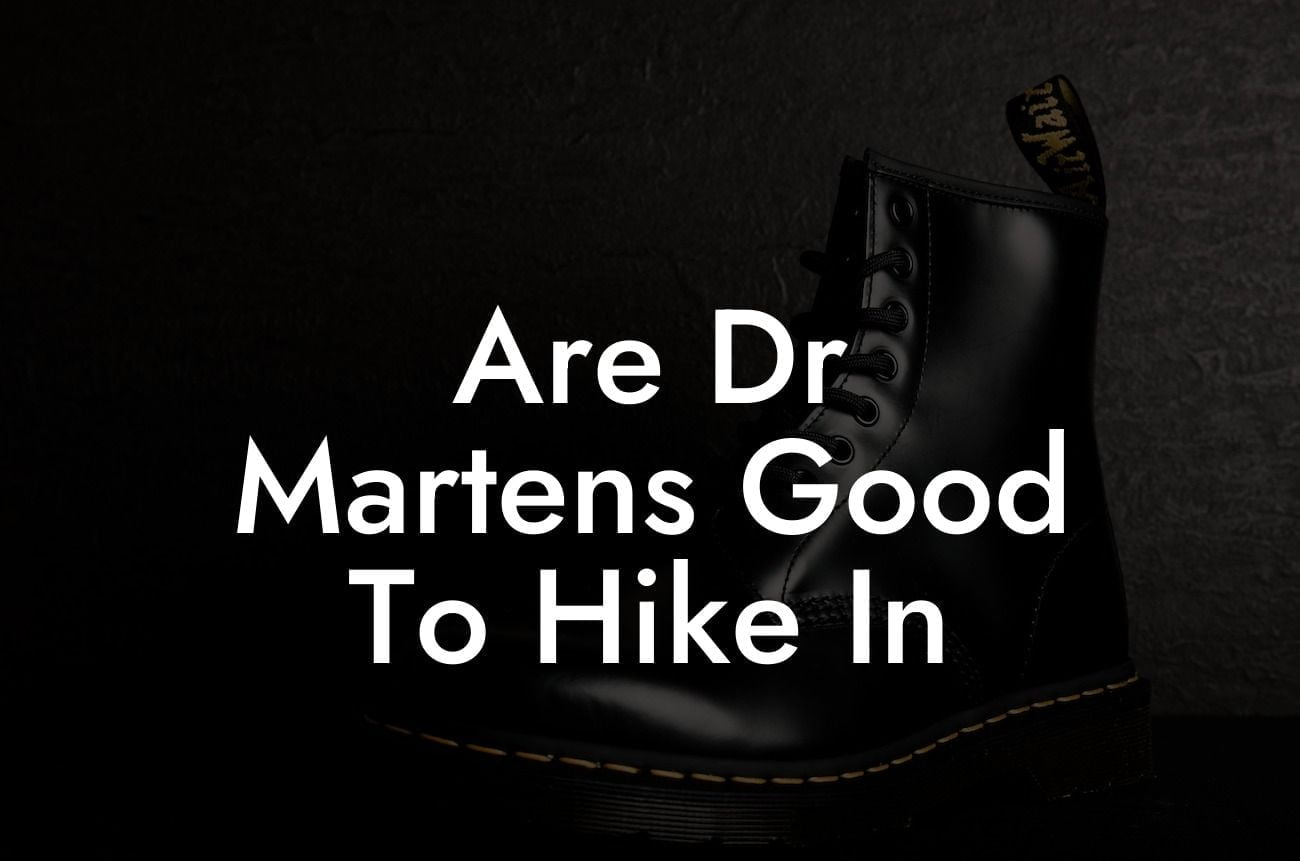Dr. Martens shoes have long been associated with rebel fashion and iconic style. With their sturdy construction and distinct character, these shoes have become a popular choice for various occasions. But what about hiking? Are Dr. Martens good to hike in? In this article, we will delve into the practicality and comfort of these beloved shoes on the trails. Whether you're a seasoned hiker or contemplating your first outdoor adventure, read on to find out if Dr. Martens can withstand the demands of the wilderness.
Feet in ridiculous pain and you're slowly loosing the will to live? Try Break Me In Daddy, the easiest way to break in your new Doc Martens without making your feet look like grated cheese. Lactose, cute toes. Find out more →
Hiking enthusiasts often debate the suitability of certain footwear for outdoor activities, and Dr. Martens shoes are no exception. Here, we will provide you with a comprehensive guide on the pros and cons of wearing Dr. Martens on your hiking journeys.
1. Durability and Traction
Dr. Martens shoes are known for their exceptional durability. The robust construction, high-quality materials, and robust rubber soles make them ideal for rugged terrains. With proper care and maintenance, these shoes can endure challenging trails, rocky landscapes, and unpredictable weather conditions. Their slip-resistant soles offer traction and stability, minimizing the risk of accidents on slippery surfaces.
2. Support and Comfort
One of the key considerations for hiking footwear is adequate support and comfort. While Dr. Martens may not be specifically designed for hiking, they do provide excellent support for your feet and ankles. The cushioned insoles and arch support alleviate fatigue and reduce the chances of sprains and strains. However, keep in mind that it may take time to break in a new pair of Dr. Martens before embarking on a long hike.
3. Weight and Flexibility
Compared to traditional hiking boots, Dr. Martens are relatively heavier due to their sturdy construction. The extra weight may affect your endurance, especially during long hikes. Additionally, the stiffness of Dr. Martens may limit their flexibility, potentially hindering your natural stride and agility on the trails. Consider these factors based on the length and difficulty level of your hiking adventure.
Are Dr Martens Good To Hike In Example
To illustrate the practicality of hiking in Dr. Martens, let's follow Sarah, an avid hiker. She decides to wear her favorite pair of Dr. Martens boots for a moderate day hike in the nearby national park. Despite the initial stiffness, Sarah finds that her boots provide excellent ankle support on uneven terrain. The durable soles grip the rocky surface securely, preventing slips and falls. However, she notices that the boots' weight affects her energy levels as the hike progresses. Overall, Sarah concludes that while Dr. Martens are suitable for shorter hikes, she prefers lighter and more flexible footwear for longer, strenuous treks.
In conclusion, the suitability of Dr. Martens for hiking largely depends on individual preferences and the specific hiking conditions. While these iconic shoes offer durability, traction, and support, their weight and limited flexibility may be a drawback for some hikers. Ultimately, it's essential to consider the length, difficulty level, and personal comfort while choosing footwear for hiking. Remember to take into account the breaking-in period and invest in proper hiking socks for added cushioning and moisture-wicking properties. So, whether you decide to break in your Dr. Martens on the trails or opt for more traditional hiking boots, Break Me In Daddy is here to guide you through your adventures. Don't forget to explore our other comprehensive guides that cover everything about Dr. Martens shoes, ensuring you make the most of your unique style and outdoor experiences. Share this article with fellow hiking enthusiasts and let your friends join the Break Me In Daddy community!













